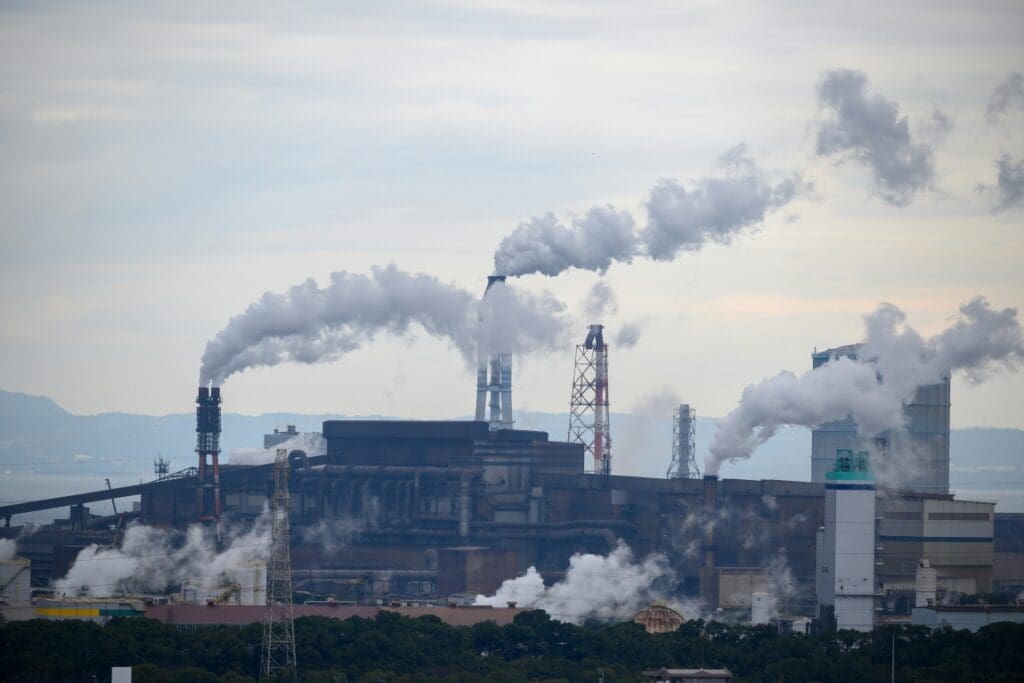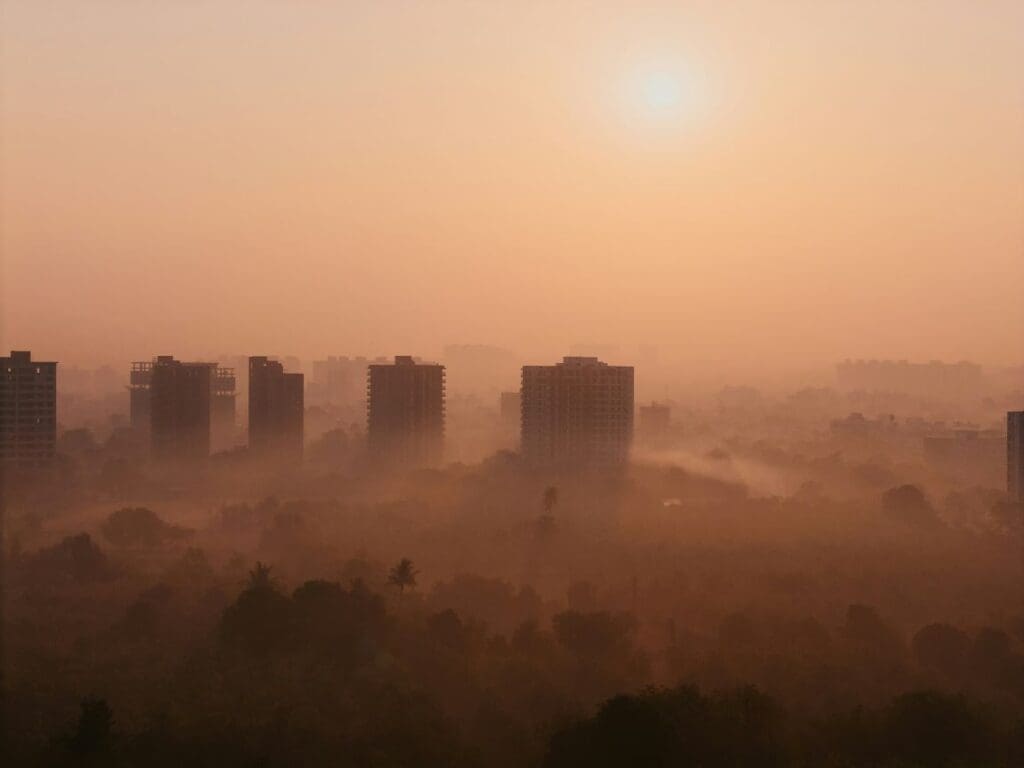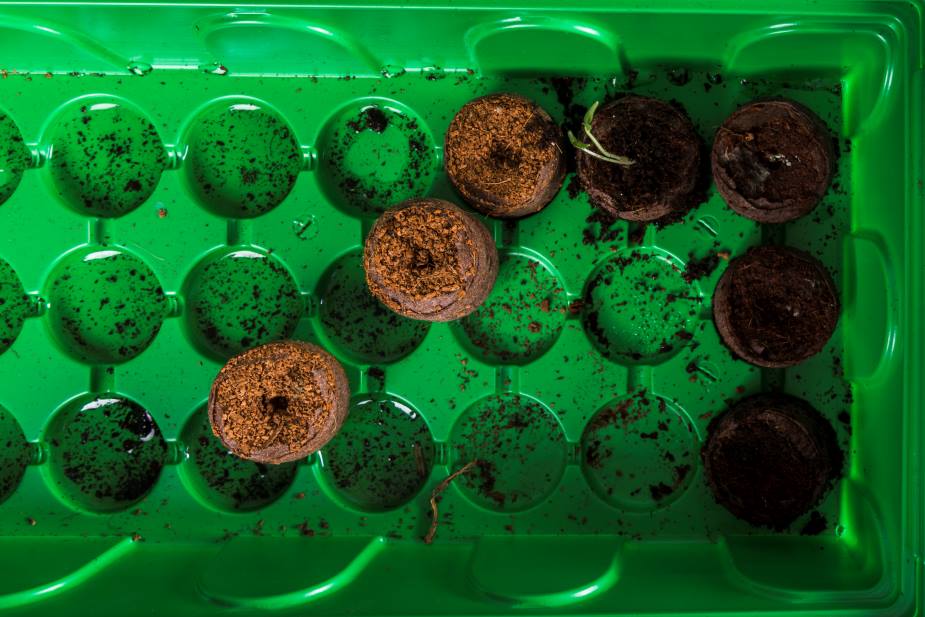Explore the latest insights from top science journals in the Muser Press daily roundup (August 24, 2025), featuring impactful research on climate change challenges.
In brief:
Where plant matters: How forests adjust aerosol cooling effect in surprising ways
The findings, published in National Science Review, demonstrate that forestation initiatives must carefully consider regional variations in atmospheric feedbacks to maximize their intended climate benefits. While tree planting has been widely promoted as a climate solution, this research reveals the mechanisms are far more nuanced than previously understood.
Reforestation and afforestation have been recognized as a crucial strategy for mitigating global warming. However, beyond assessing its “carbon sink effect,” it is equally important to holistically evaluate the dual climatic effects induced by vegetation changes through alterations in both surface and atmospheric conditions.
Vegetation modifications regulate radiative balance by changing surface albedo, while also disturbing near-surface aerodynamic processes through structural changes in plant cover. These biogeophysical effects can trigger cascading climate responses. Simultaneously, biogenic volatile organic compounds (BVOCs) released by vegetation undergo atmospheric oxidation to form secondary organic aerosols (BSOA), which exert cooling effects by scattering solar radiation and modulating cloud microphysical processes.

The study reveals a dual modulation mechanism governed by distinct biogeophysical processes: When vegetation changes are primarily driven by reduced surface albedo, increased forest cover enhances solar absorption, leading to localized warming that significantly stimulates BVOC emissions from trees. This in turn amplifies the radiative cooling effect of BSOA.
Conversely, when vegetation changes are dominated by enhanced updraft disturbances, the moisture uplift intensified by forests promotes the formation of dense cloud layers, which reduce surface solar radiation and consequently suppress BVOC emissions. This suppression diminishes BSOA formation and weakens its radiative cooling capacity.
This bidirectional modulation stems from fundamental regional differences in dominant biogeophysical mechanisms – albedo reduction acts as a “warming engine” that activates BSOA’s cooling potential, while aerodynamic disturbance functions as a “sunshade” that inhibits BSOA’s cooling capability. The contrasting effects highlight the complex interplay between surface and atmospheric processes in determining the net climate impact of afforestation.
Earth system modeling reveals pronounced spatial heterogeneity in how biogeophysical processes modulate BSOA radiative effects across vegetated regions. The simulations demonstrate that biogeophysical feedback acts as an “effect amplifier” in half of global vegetated areas, intensifying BSOA radiative effect variations by up to twofold. Conversely, in the remaining half of vegetated zones, these processes function as “dampening regulators,” offsetting over 50% of BSOA radiative effect changes.
The study further reveals that biogeophysical feedback can induce large-scale climatic changes which subsequently cause disproportionately large variations in BVOC emissions even in areas with relatively minor vegetation changes. Such regional feedback effects are especially prominent in densely vegetated ecosystems like the Amazon rainforest. Importantly, failure to account for this spatial heterogeneity in biogeophysical modulation may lead to significant uncertainties in evaluating and predicting BSOA radiative effects under global vegetation change scenarios.
This landmark study has for the first time systematically revealed the dual regulatory mechanism through which vegetation changes modulate aerosol radiative effects via biogeophysical processes. “Our work provides the missing piece in understanding the complex ‘afforestation-climate feedback’ chain,” said Prof. Pingqing Fu. “We now know tree planting isn’t as simple as ‘plant and cool’ – it requires precision design based on regional dominant biogeophysical processes.”
Journal Reference:
Jialei Zhu, Joyce E Penner, Hao Liu, Qinghao Guo, Yaxin Liu, Junjun Deng, Xi Zhao, Cong-Qiang Liu, Pingqing Fu, ‘Reforestation-induced aerosol cooling effects divergently modulated by various biogeophysical feedbacks’, National Science Review nwaf323 (2025). DOI: 10.1093/nsr/nwaf323
Article Source:
Press Release/Material by Science China Press
Barcelona Supercomputing Center leads development of an early warning system that predicts dengue outbreaks in the Caribbean months in advance
In an advance for climate-informed disease early warning systems, a team of researchers, public health actors and meteorologists have developed a prediction model capable of forecasting dengue outbreaks in the Caribbean up to three months in advance. The study, led by Chloe Fletcher and Rachel Lowe, from the Global Health Resilience group at the Barcelona Supercomputing Center-Centro Nacional de Supercomputación (BSC-CNS), introduces a predictive model that captures the complex interplay between drought, heat, and extreme rainfall conditions on dengue outbreak risk in Barbados.
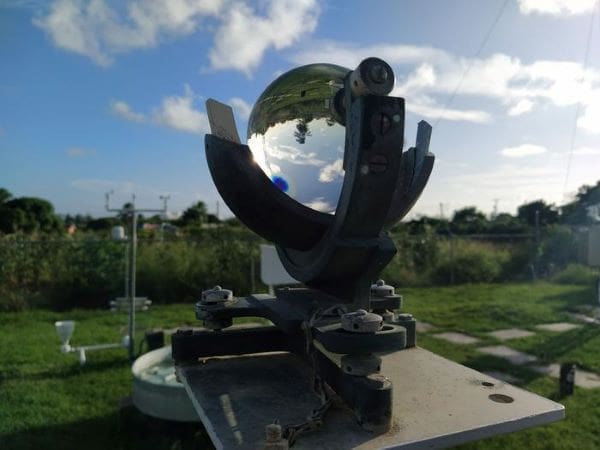
These extreme weather events are becoming more frequent and intense in the Caribbean due to climate change. At the same time, dengue outbreaks and other mosquito-transmitted diseases, such as Chikungunya and Zika, have become increasingly common and explosive across the region over the last 15 years.
Fuelled by climate change, the global incidence of dengue has also increased significantly over the past two decades, posing a major public health challenge. In 2024, 14.1 million dengue cases were reported worldwide, surpassing the historic milestone of 7 million observed in 2023, where over 92% of cases were recorded in the Americas. Significant outbreaks also occurred in Southeast Asia and Africa and even Europe has experienced sporadic local transmission in countries like Italy, France, and Spain, indicating a growing risk of establishment as mosquito vectors expand across the continent.
The effect of successive extreme weather events on dengue outbreak risk
The model presented in the study, published in The Lancet Planetary Health, incorporates interactions between climate variables, such as temperature and precipitation indicators at varying time lags, to predict the probability of a dengue outbreak and the approximate number of cases in Barbados three months in advance. Specifically, the research found that extremely dry conditions 5 months prior to an outbreak, followed by warmer temperatures 3 months prior, and heavy rainfall 1 month prior, led to the highest incidence of dengue. Using this approach, the model correctly identified 81% of observed outbreaks during model validation from 2012 to 2022, significantly outperforming traditional surveillance models.
“This modelling approach allows us to account for the effect of successive extreme weather events on disease outbreak risk,” said Chloe Fletcher, first author of the study and PhD candidate at the BSC’s Global Health Resilience group. “By focusing on interactions between climatic drivers, we were able to better anticipate dengue outbreak risk in Barbados. These forecasts provide local and regional decision-makers with timely, actionable information to mitigate or prevent an outbreak from occurring.”
National dengue early warning system in Barbados
In partnership with the Barbados Ministry of Health and Wellness and other regional health and meteorological agencies, the team applied the model in a real-world context ahead of the ICC Men’s Twenty20 (T20) Cricket World Cup in June 2024. The model predicted a 95% probability of a dengue outbreak based on observed cases and forecasted climate conditions as of March 2024, prompting additional checks and re-treatments of known mosquito breeding sites around the cricket venue and nearby communities ahead of the tournament.
ICREA Professor and leader of the Global Health Resilience group, Rachel Lowe, senior author of the study, emphasized the broader significance of the research: “This study brings us a step closer to implementing early warning systems for climate-sensitive infectious diseases in the Caribbean. What we have piloted in Barbados could be adapted to other regions facing similar public health risks.”
From 2025, the model will become part of a national dengue early warning system in Barbados.
Looking ahead, the research team plans to validate further the model and explore its application to other climate-sensitive diseases and geographic contexts. Their work offers a powerful example of how interdisciplinary collaboration – spanning epidemiology, climate science, and public health – can help mitigate disease risks in an era of increasing climatic uncertainty.
Journal Reference:
Fletcher, Chloe et al., ‘Compound and cascading effects of climatic extremes on dengue outbreak risk in the Caribbean: an impact-based modelling framework with long-lag and short-lag interactions’, The Lancet Planetary Health online, 101279 (2025). DOI: 10.1016/j.lanplh.2025.06.003. Also available on ScienceDirect.
Article Source:
Press Release/Material by Barcelona Supercomputing Center (BSC)
Northern losses and southern gains – climate change reshapes moth communities across Finland
A new study published in Nature Communications, led by the University of Helsinki examined how climate change is altering moth communities across Finland. The researchers wanted to understand whether communities are undergoing thermophilisation – a shift towards species that prefer warmer conditions – as the climate warms.
Their findings confirm that Finnish moth communities are becoming increasingly dominated by warm-adapted species. While the thermophilisation was observed across the country, the mechanisms that lead to it were strikingly different.
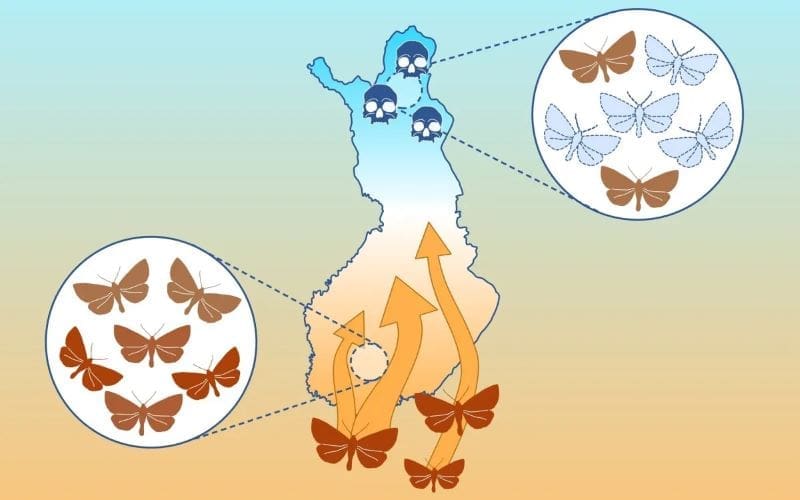
In northern Finland, thermophilisation was occurring at a faster rate and primarily driven by the local disappearance of cold-adapted species. In contrast, southern Finland experienced thermophilisation through the arrival of new warm-adapted species, while most resident species persisted.
These findings suggest that cold-adapted species in northern Finland are particularly vulnerable under climate change, as the communities face more species losses than additions. This pattern points to a greater risk for communities at the cold edge of species’ climatic ranges.
“The rate of change in the composition of moth communities was twice as fast in the north compared to the south,” says lead author Dr. Emilie Ellis from the Research Centre for Ecological Change. “That rapid pace makes northern biodiversity especially vulnerable to the harmful effects of climate warming.”
Recognising that cold-adapted species are at risk will help to inform conservation strategies to support Finnish biodiversity. According to researchers continued monitoring and research are therefore crucial to track how these species are changing over time.
The team drew on a long-term dataset built through decades of dedicated volunteer monitoring. It includes more than 224,000 moth observations collected across Finland’s 1,200 km length over a 30-year period. This extraordinary effort made it possible to uncover how climate change is reshaping moth community composition across the country.
***
The research was done in collaboration with the Finnish Environment Institute.
Journal Reference:
Ellis, E.E., Antão, L.H., Davrinche, A. et al., ‘Recent community warming of moths in Finland is driven by extinction in the north and colonisation in the south’, Nature Communications 16, 7063 (2025). DOI: 10.1038/s41467-025-62216-9
Article Source:
Press Release/Material by University of Helsinki
Smithsonian study reveals carbon markets undervalue shade-grown coffee farms
A new global analysis reveals a critical oversight in sustainable coffee and carbon-capture initiatives. These programs incentivize the planting of new trees yet fail to reward the preservation of mature shade trees in existing agroforestry farms, despite their far greater carbon storage potential.
According to new research from the Smithsonian’s National Zoo and Conservation Biology Institute (NZCBI) and Smithsonian Tropical Research Institute (STRI), published in the journal Communications Earth & Environment, more than twice as much carbon stands to be lost through the removal of non-coffee shade trees than might be gained through tree planting – even if every plantation-style coffee farm in the world planted new shade trees.
Globally, coffee farms cover more than 10 million hectares. Farming systems vary in intensity, from plantation-style monocultures to agroforestry systems with native trees that provide shade, wildlife habitat and carbon storage. Planting new shade trees is currently incentivized through carbon markets, which allow coffee farmers to sell carbon credits generated via tree planting. However, existing agroforestry systems are rapidly converting to monoculture plantations, releasing significant amounts of carbon into the atmosphere while destroying habitat.
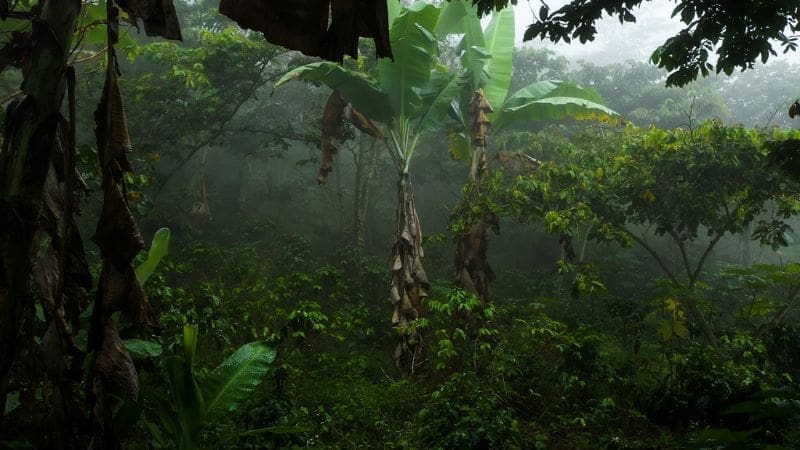
Scientists from NZCBI and STRI identified a critical gap in current carbon markets, which compensate coffee farmers for planting new trees but not for protecting standing trees. This potentially creates an incentive to remove existing trees to plant new ones that store less carbon but would be eligible for carbon-credit payments.
“There is a lot of money behind planting trees on degraded coffee farms, yet there are basically no financial incentives, outside of the Smithsonian Bird Friendly certification, to protect standing shade trees,” said NZCBI ecologist Ruth Bennett, senior author of the study and leader of Smithsonian Bird Friendly program, which offers a gold standard certification for coffee and cocoa farms that conserve high-quality habitat for wildlife. “To be clear, planting shade trees on monoculture coffee farms is a positive step, but our findings show tree planting alone can’t make up for what you lose when you remove mature shade trees.”
The study, conducted in collaboration with The Nature Conservancy and CIRAD, also found carbon-focused tree planting efforts do not necessarily boost biodiversity. Carbon sequestration is optimized by maximizing tree density, while biodiversity benefits more from tree diversity.
“To protect nature and fight climate change, coffee companies need to focus on planting a diversity of the right trees, not just planting a high density of fast-growing trees that capture carbon,” said Emily Pappo, the study’s first author and a postdoctoral climate fellow at the Smithsonian.
Prior research demonstrated coffee farms that include a diverse mixture of shade trees harbor roughly four times more bird species than coffee monocultures. Such findings are at the heart of the Bird Friendly coffee certification criteria, which ensure farms maintain dense and diverse shade trees. This certification grants farmers access to specialty markets and enables them to set higher asking prices, rewarding them for conserving biodiversity.
Coffee farmers are facing economic pressure and reduced yields due to climate change, and some are responding by removing shade trees on their properties in hopes of producing more coffee, even though scientists believe shade trees may help producers adapt to climate change by assisting with temperature and moisture regulation. At the same time, some large coffee companies are investing millions in tree-planting efforts to meet their climate goals via carbon credits.
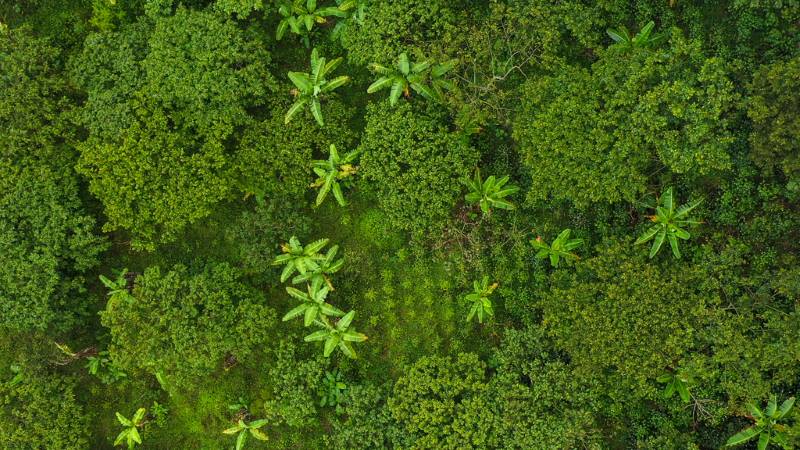
Researchers wanted to understand just how much carbon is stored in coffee farming landscapes and evaluate how carbon and biodiversity could change through tree planting or the removal of shade trees.
The researchers gathered data from 67 scientific studies conducted in coffee regions around the world. They examined farms across a spectrum – from bare “sun coffee” monocultures with no trees at all to complex agroforestry systems where coffee grows under a canopy of native forest trees. The researchers compared the carbon stored in each type of farm, then applied these measurements to existing data on global coffee growing that shows 41% is grown in full sun, 35% with minimal shade and 24% under diverse tree cover. Finally, the team modeled what might happen under various scenarios – calculating the maximum possible carbon gains if every sun farm planted trees, and the potential losses if farms cut down existing shade trees.
The study estimated coffee farms currently store 482 million metric tons of carbon above ground. The modeled scenarios revealed that even if all sun coffee farms added shade trees, they would sequester only 82–87 million additional metric tons of carbon. In contrast, if all shade-grown coffee were converted to monocultures, 174–221 million metric tons of carbon could be released into the atmosphere.
These extreme scenarios expose a fundamental issue with current carbon-market incentives for coffee farms: Mature shade trees store more carbon than newly planted trees, yet only new trees are incentivized via carbon markets. Prioritizing tree-planting above conserving existing shade trees could undermine the effectiveness of the coffee industry’s investments in climate solutions.
“If we don’t prioritize biodiversity on carbon sequestration projects, it won’t accidentally happen,” Pappo said. “This means choosing a diverse suite of shade trees with the aim of conserving biodiversity.”
To maximize the potential of coffee farming to fight climate change and boost biodiversity, the study authors call for creating carbon payment programs that reward protecting existing shade trees and ensuring these payments are accessible to small farms. For tree-planting efforts, researchers recommend explicitly prioritizing tree diversity in all planting initiatives to support biodiversity. Without these changes, global coffee agriculture may continue to lose carbon and biodiversity despite investments in tree planting.
Going forward, Smithsonian researchers are continuing to develop the Shade Catalog, a resource to help coffee farmers select shade trees that work well alongside coffee while providing benefits to wildlife and ecosystem services. Bird Friendly-affiliated researchers are also working on tools to help farmers find the balance between carbon storage, biodiversity and farm productivity.
Journal Reference:
Pappo, E., Cook-Patton, S., Beillouin, D. et al., ‘Carbon payment strategies in coffee agroforests shape climate and biodiversity outcomes’, Communications Earth & Environment 6, 661 (2025). DOI: 10.1038/s43247-025-02574-w
Article Source:
Press Release/Material by Smithsonian
Featured image credit: Gerd Altmann | Pixabay


